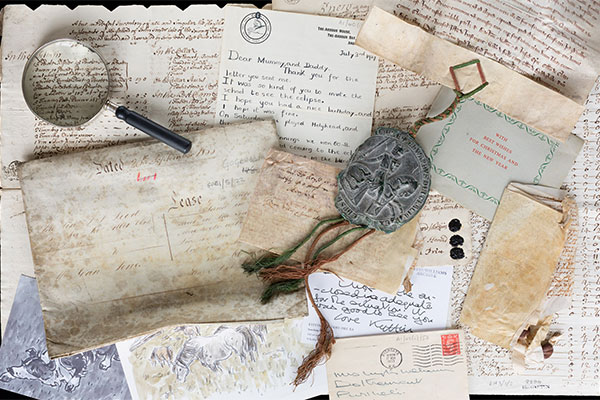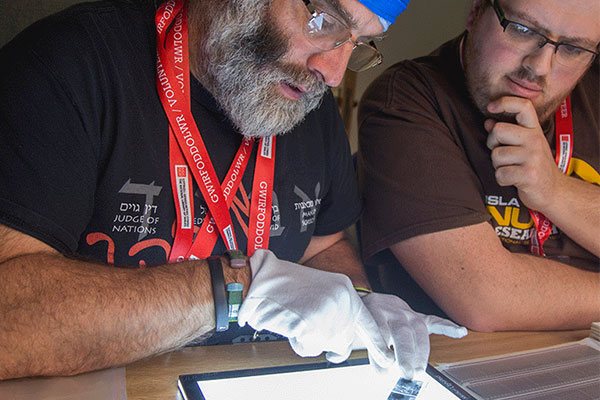For the past 2 years, the Screen and Sound digitisation team have been working on a project for the Wales Broadcast Archive, digitising ITV Cymru Wales 16mm film cans and 1 inch tapes. The ITV Cymru Wales collection is brimming with sometimes long-forgotten personal, local, national and international stories, in the form of individual clips and programmes, which are coming together to form a valuable and unique snapshot of life Wales in the 2nd half of the 20th Century. This month sees us reaching an impressive milestone of 10,000 items digitised. This is a sizeable achievement, taking into consideration the complex sequence of tasks that need to happen to get each item from a line on a spreadsheet, to a viewable and searchable file.
As would be expected, the 16mm films are labour intensive; each one has to be inspected and repaired if necessary to ensure safe transfer on one of our film scanners. When scanning is complete, the .dpx and .wav files that have been created are processed on video editing software - excess frames are removed from the footage, any available sound element is added, and in some cases a light colour grade is applied. At this stage, each item is cross referenced with the often complex catalogue records for that film can, to ensure that the final output is using a filename that links it to the correct metadata. After a QC check, the files are ready to be sent to the digital archive, where they are then subject to appropriate verification for long term preservation.

Working with 1 inch tapes has presented its own challenges. Before the project got underway, we only had access to 3 working 1 inch tape players. A refurbishment programme was completed before work started, which gave us 8 operational machines. Bearing in mind that the knowledge and skills to service these machines is becoming increasingly obsolete, this was an achievement in itself, and with staff able to run two set-ups at once, it has allowed us to digitise more tapes than ever before. The team utilise these legacy 1 inch tape players attached to a modern interface, that converts the analogue source to a digital file format suitable for long term preservation. An interesting fact – the tapes can be up to 90 minutes long, and so far the digital files that we've created take up over 260 TB of space!
Tapes, whilst not needing the same level of hands-on conservation work as film, have unique issues which have proved to be problematic. Some of our tapes suffer from ‘Sticky Shed Syndrome’, as a result of absorbing moisture during their lifetime. This either results in the tape being very ‘glitchy’, or being unplayable. To deal with this, we have 4 ‘baking machines’, which heat up the tapes to extract the moisture, giving us a small window of opportunity to attempt digitisation, before they revert back to their original state. Over time these tapes will continue to deteriorate, which highlights the preservation value of our work, as they will eventually become unplayable.
Another side to this project has been dealing with the metadata records. Whilst our film clips usually have descriptive summaries, many of the tapes we're working on lack this information. We have been fortunate to have a group of volunteers who are viewing the tapes, and creating descriptive summaries, with the aim of making the programmes more discoverable in the future.
During the project we have also been able to devise a new content alert system, which has allowed the creation and application of a comprehensive set of informative alerts, to ensure the viewer is aware of what sort of material they may come across when watching clips. The alerts are applied to the catalogue records, and subsequently will be available on any future viewing platforms.
The final destination for the digitised material is the National Library staff Media Asset Management system (MAM), and ultimately the Clip Cymru website, which grants public access at different 'Clip Corners’ across Wales.
To date, nearly 4,000 items from this project are available in Clip Corners, and the number is growing rapidly. Viewers will be able to enjoy having access to these items, along with a vast amount of other material from all the major broadcasters in Wales.
The project has been a library-wide collaboration involving curatorial, digitisation, systems & IT staff and volunteers, and the experience gained will help pave the way for future projects.
Category: Article





